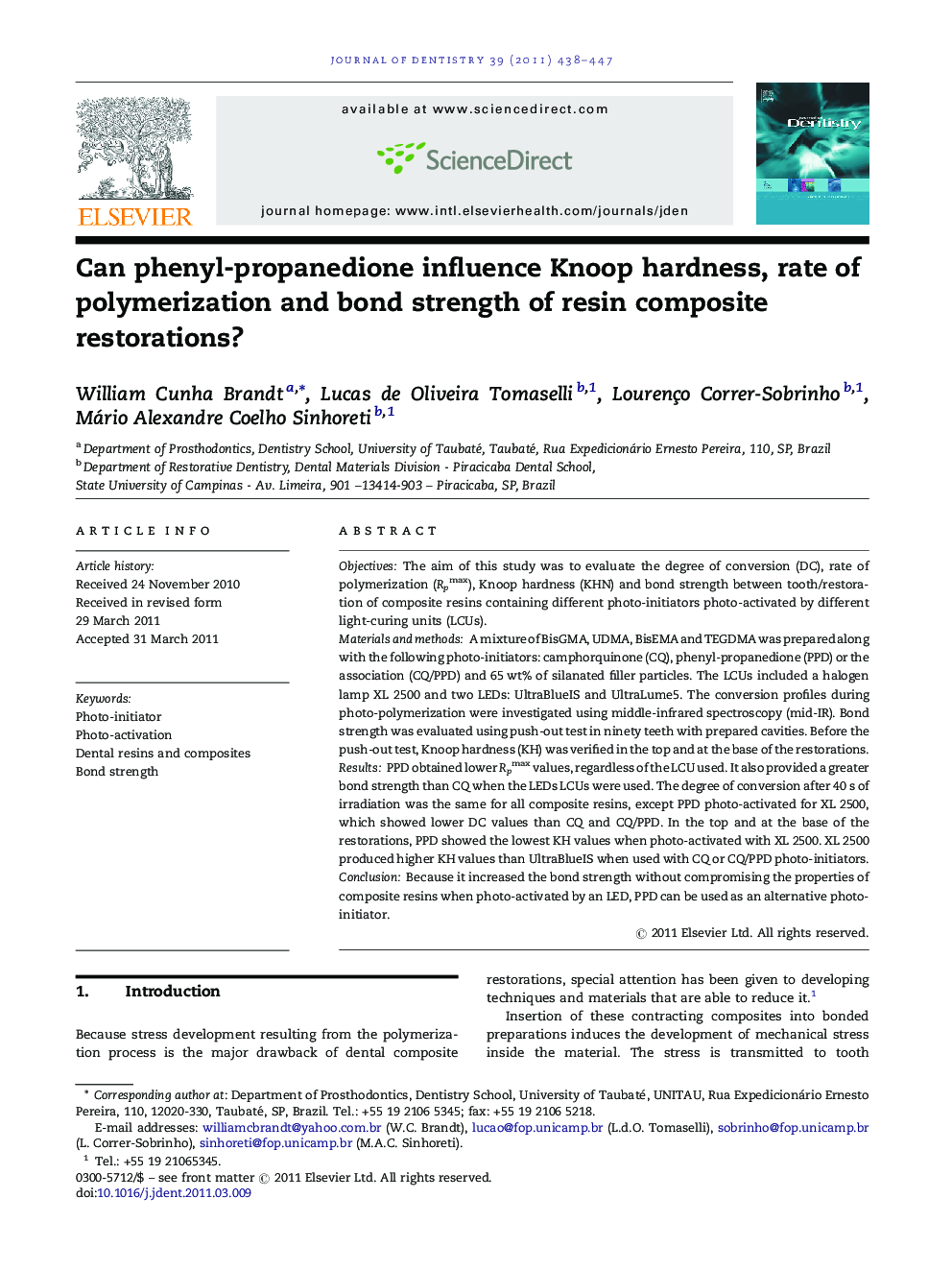| Article ID | Journal | Published Year | Pages | File Type |
|---|---|---|---|---|
| 6053605 | Journal of Dentistry | 2011 | 10 Pages |
ObjectivesThe aim of this study was to evaluate the degree of conversion (DC), rate of polymerization (Rpmax), Knoop hardness (KHN) and bond strength between tooth/restoration of composite resins containing different photo-initiators photo-activated by different light-curing units (LCUs).Materials and methodsA mixture of BisGMA, UDMA, BisEMA and TEGDMA was prepared along with the following photo-initiators: camphorquinone (CQ), phenyl-propanedione (PPD) or the association (CQ/PPD) and 65Â wt% of silanated filler particles. The LCUs included a halogen lamp XL 2500 and two LEDs: UltraBlueIS and UltraLume5. The conversion profiles during photo-polymerization were investigated using middle-infrared spectroscopy (mid-IR). Bond strength was evaluated using push-out test in ninety teeth with prepared cavities. Before the push-out test, Knoop hardness (KH) was verified in the top and at the base of the restorations.ResultsPPD obtained lower Rpmax values, regardless of the LCU used. It also provided a greater bond strength than CQ when the LEDs LCUs were used. The degree of conversion after 40Â s of irradiation was the same for all composite resins, except PPD photo-activated for XL 2500, which showed lower DC values than CQ and CQ/PPD. In the top and at the base of the restorations, PPD showed the lowest KH values when photo-activated with XL 2500. XL 2500 produced higher KH values than UltraBlueIS when used with CQ or CQ/PPD photo-initiators.ConclusionBecause it increased the bond strength without compromising the properties of composite resins when photo-activated by an LED, PPD can be used as an alternative photo-initiator.
